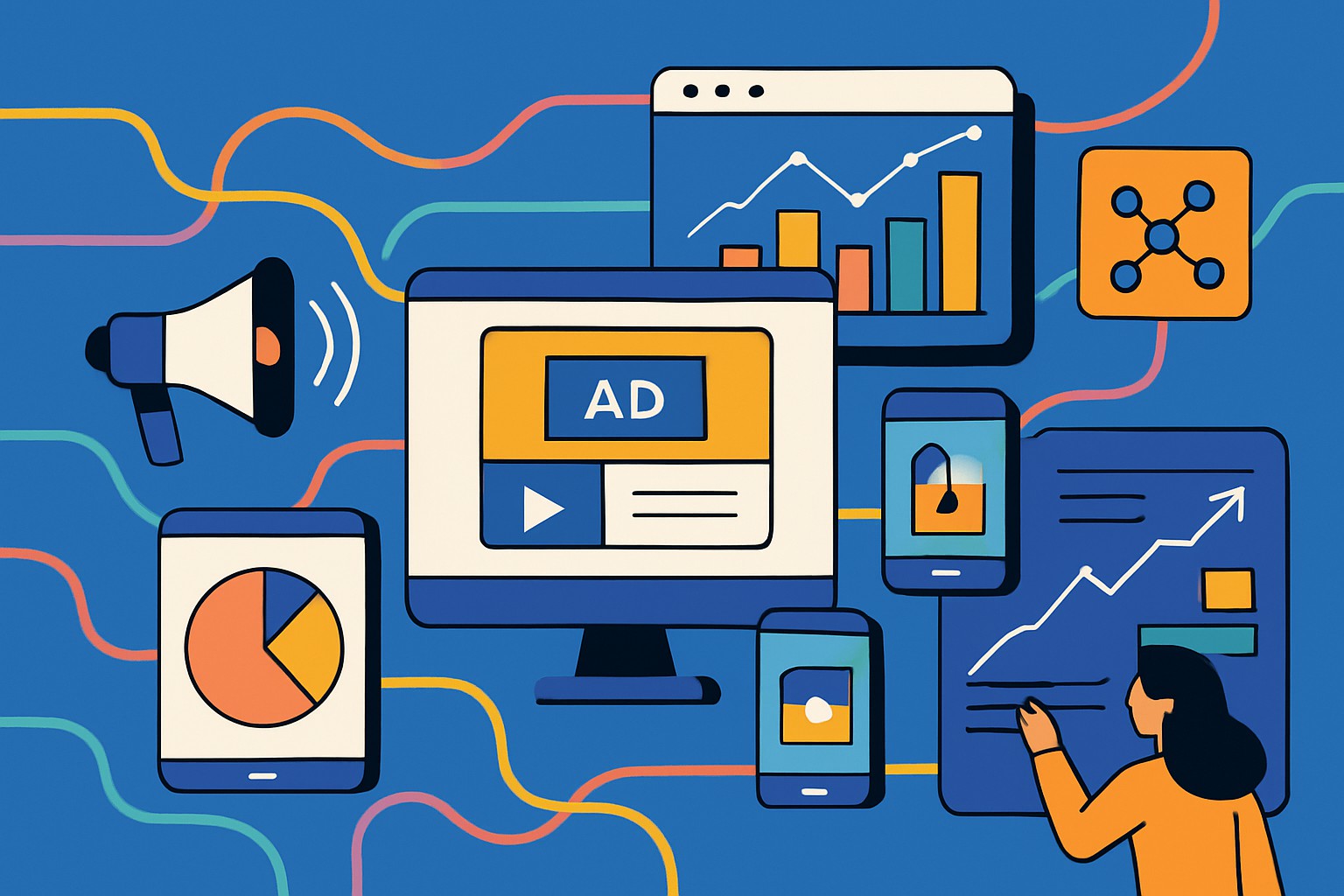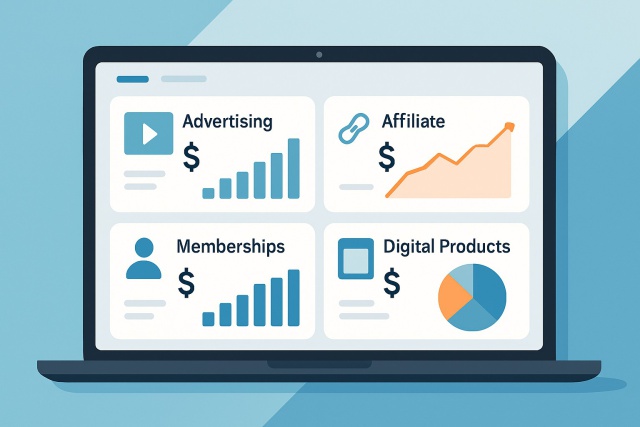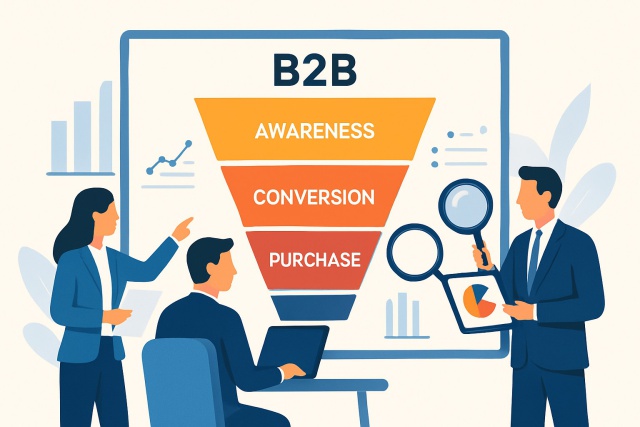Comparing Programmatic Advertising Platforms for Smarter Ad Spending


Programmatic advertising platforms take the hassle out of buying ads by using data-driven technology to automate the whole process, making it possible to target campaigns with impressive precision.
What Exactly Are Programmatic Advertising Platforms? Let’s break it down and get to the heart of what these platforms really do.
Programmatic advertising platforms use automated technology to buy and optimize digital ads across multiple channels in real time. Thanks to real-time bidding and demand-side platforms these systems constantly fine-tune bids and targeting to boost campaign effectiveness.
Important Factors to Keep in Mind When Weighing Programmatic Advertising Platforms
When it comes to picking a programmatic advertising platform marketers have to juggle a few important factors to make sure they’re hitting the bullseye with their goals. Typically the biggies include how spot-on the targeting can be, the quality and variety of inventory available, pricing that’s straightforward and flexible enough to wiggle around, plus solid analytics and reporting that don’t make your head spin.
- Platforms should offer detailed targeting options covering demographics, behavior, location and device types so you can focus on the most relevant audiences without wasting a dime.
- Pricing models need to be clear and flexible to suit all kinds of budgets whether you are experimenting with CPM, CPC or CPA methods.
- The quality and reach of inventory matter a lot. You want your ads to appear on trustworthy sites and apps at a scale that really moves the needle.
- Comprehensive reporting and analytics are essential. They provide marketers with the insights needed to track performance and adjust campaigns quickly.
- A user-friendly platform design greatly reduces the learning curve and speeds up campaign setup because nobody has time for confusion these days.
- Reliable customer support acts as a safety net for technical issues and helps users fully understand the platform’s features.
- Integration with your existing marketing tech stack ensures everything runs smoothly. This streamlines workflows and makes data sharing easy for more cohesive campaign management.
An Introduction to the Programmatic Advertising Platforms We Took a Closer Look At
We will take a closer look at three popular digital marketing platforms: Semrush, Moz and Mangools. These tools are primarily tailored for SEO and competitive analysis but also pack some handy data and integrations that can boost programmatic advertising efforts.
Here’s a handy overview comparing top programmatic advertising platforms by pricing, features, ease of use, and scalability — all to help you find the best fit for your marketing needs without the usual headache.
| Key Differences |  |  |  |
|---|---|---|---|
| Pricing | Pro $119.95, Guru $229.95, Business $449.95/month — a serious investment, especially for smaller outfits, but packed with value. | Standard $99, Medium $149, Premium $249/month — fairly straightforward pricing but leans toward the pricier side for advanced tiers. | Basic $29.9, Premium $39.9, Agency $79.9/month — one of the most budget-friendly options out there, perfect if your wallet’s feeling a bit light. |
| Key Features | Covers the essentials like keyword research, backlink analysis, site audits, plus handy content marketing tools that make life easier. | Solid suite of keyword research, site audits, link analysis, and content optimization tools that many swear by. | Focuses on keyword research, SERP analysis, backlink analysis, and rank tracking — the essentials laid out plainly. |
| Ease of Use | User-friendly overall with reports you can tweak to your heart’s content; just be prepared for a bit of a learning curve when you’re starting out. | Offers a comprehensive array of tools with a moderate learning curve — not too daunting but not a walk in the park either. | Extremely intuitive and user-friendly, making it a breeze for all skill levels to get the hang of it quickly. |
| Target Audience | Freelancers, startups, SMBs, large enterprises, and agencies alike — it really spans the gamut. | Geared toward digital marketers, SEO pros, and businesses of all sizes wanting reliable expertise. | Ideal for bloggers, small businesses, SEO newbies, and digital marketers who prefer simplicity without sacrificing quality. |
| Integration and Extensions | API access kicks in at the Business level, though social media monitoring feels a bit limited compared to others. | Not heavy on integrations; includes Moz Local and the MozBar extension, which can be handy depending on your workflow. | Limited integrations; works mainly as a standalone SEO toolset with no API access to tie into other systems. |
| Scalability | Packed with advanced features and collaboration tools designed to grow with your enterprise-level ambitions. | Plays well with growing agencies, offering advanced tools at higher tiers to keep pace. | Best suited for small to medium projects; it won’t bog you down but does lack some of the advanced features bigger players offer. |
| Pros | A powerhouse of SEO tools, strong competitive analysis, broad global reach, and they keep things fresh with regular updates. | Renowned SEO expertise, detailed analytics, and a solid reputation in the industry that’s hard to beat. | Affordable pricing, easy-to-use interface, reliable data, and solid metrics — all good things for the price. |
| Cons | You’ll need a deeper pocket to unlock the full feature set, plus watch out for some data gaps here and there; oh, and the learning curve can feel steep at first. | If you’re chasing advanced features, be ready for a higher price tag, fewer integration options, and a bit of a learning curve for beginners. | Smaller keyword database, fewer advanced features, and limited third-party integration options — nothing deal-breaking but worth noting. |
| Visit Semrush Website | Visit Moz Website | Visit Mangools Website |



Assessment of Features and Capabilities That Are crucial for Programmatic Advertising
Each platform tackles programmatic advertising with its own unique flavor and offers competitive ad intelligence, keyword and audience insights, backlink data, and integration options. Semrush shines in deep competitive research and spotting trends before they blow up. Moz leans heavily into authoritative backlink data and fine-tunes content for maximum impact. Meanwhile, Mangools strikes a nice balance between being budget-friendly and approachable with solid keyword tools to boot.
| Feature | Semrush | Moz | Mangools |
|---|---|---|---|
| Competitive Research | Delivers in-depth competitor ad and SEO data, along with handy market trend insights that really give you the full picture | Offers solid backlink and content analysis for keeping tabs on competitors | Provides straightforward, no-frills insights into SERP and competitors |
| Keyword Analysis | Serves up comprehensive data on keyword volume, CPC, and difficulty to help you dig deep | Brings reliable keyword difficulty and opportunity metrics to the table | Shows off a clean, easy-to-use interface for keyword difficulty and volume — perfect if you like to keep things simple |
| Audience Insights | Includes data on audience demographics, behavior, and interests, so you can get to know your crowd better | Has somewhat limited audience data, mainly zeroing in on SEO metrics | Offers only basic, minimal direct audience analytics — nothing fancy |
| Integration with DSPs | API available for custom integrations if you’re on the Business plan, letting you tailor things just how you like | Supports a handful of third-party integrations but not a ton | Does not provide direct DSP integrations, so you might need to look elsewhere |
| Reporting Tools | Lets you create highly customizable reports featuring multiple metrics — great if you like to drill down | Delivers detailed SEO reports packed with link and ranking information | Offers simple, straightforward reports centered on key performance indicators, no headaches |
| Ease of Use | Comes with a steeper learning curve but hey, it’s packed with features that make the climb worthwhile | Strikes a balance with a moderate learning curve and a clean interface | Designed with an intuitive, beginner-friendly user interface that practically holds your hand |
Pricing Models and What They Really Mean for Advertisers
Pricing definitely plays a starring role when you are picking a programmatic-savvy platform. Semrush comes across as a solid enterprise-level solution and its steeper price tag usually matches the impressive range of features and API access it offers. Moz caters to a diverse crowd of marketers with mid-level pricing and flexible modular plans that can bend to your needs. Mangools meanwhile is all about appealing to those watching their budget by offering competitive starting prices and straightforward no-nonsense plans.
- Semrush Pro kicks off at $119.95 per month but if you are looking to unlock advanced features and custom API access, you will need the Business plan at $449.95 per month. It’s the kind of investment that makes you pause but sometimes you get what you pay for.
- Moz’s Standard Plan starts at a solid $99 per month while their Premium plan runs $249 per month with higher limits and more bells and whistles. It’s a nice middle ground for those who want a bit more oomph without breaking the bank.
- Mangools tends to be the wallet-friendly champ here with plans ranging from $29 to $79 per month. Perfect for small businesses and freelancers who want powerful tools without the sticker shock.
- Trial options vary quite a bit. Moz offers a generous 30-day free trial. Semrush keeps it short and sweet with a 7-day trial and Mangools lets you dip your toes in with a limited free tier. Each has its own way to let you test the waters.
- Semrush might tack on extra fees for API access or add-ons which could make budgeting trickier. On the flip side, Moz and Mangools are generally more straightforward with fewer surprise costs making it easier to keep your expenses in check.
User Experience and Support Ecosystem
Navigating the whole user experience and support landscape can sometimes feel like juggling flaming torches. It’s not just about making things look pretty; it’s the behind-the-scenes magic that truly counts. From the moment someone lands on your platform to the times they inevitably need a helping hand, every interaction matters. And let’s face it, a smooth support system can turn a frustrated user into a loyal advocate faster than you can say “customer service.” So buckle up, because creating a seamless experience is both an art and a science—one that can make all the difference in the world.
User experience and support really hold the cards when it comes to how well a campaign pans out. Semrush comes loaded with a detailed help center full of tutorials and webinars. Moz hits a nice sweet spot by offering powerful tools in a straightforward interface and active community forums where users solve problems and learn together. Mangools shines with its simple design, solid guides and email support that’s quick on the draw.
Finding the Right Programmatic Advertising Platform for You (Because Let’s Be Honest, It’s Not Always a Walk in the Park)
Picking the right platform really comes down to a few key things: your organization's size, how intricate your campaigns get, your budget and the technical skills on your team. When evaluating programmatic advertising platforms, Semrush often shines for large enterprises that crave detailed data and want customizable integrations that do not break a sweat. Moz usually fits mid-sized businesses like a glove, offering solid SEO tools without burning a hole in the wallet. Meanwhile Mangools is a great pick for small businesses and freelancers who want something straightforward and budget-friendly.
Clearly nail down your total advertising budget and figure out how much can comfortably go toward platform subscriptions and data analytics without breaking the bank.
Give some thought to the level of detail your campaign's analytics and reporting really need.
Check how well the platform plays with your current DSPs and marketing tools because nothing kills momentum like a workflow that’s all over the place.
Make sure to peek under the hood of the customer support options. It’s a big plus if they offer live help and active community forums where you can bounce ideas around or get urgent questions answered.
Match each platform’s core strengths with what your campaign needs and just as importantly the skills your team brings to the table.

Digital marketing specialist reviewing programmatic advertising performance dashboards in a high-tech workspace.
Frequently Asked Questions
Are Semrush, Moz, and Mangools actual programmatic advertising platforms?
No, they aren’t DSPs (Demand-Side Platforms) that handle ad buys directly. Think of them more like trusty sidekicks rather than the main hero. This article points to them as powerful tools that complement those platforms. They deliver key data like keyword research, competitor analysis and audience insights that help you run smarter campaigns on dedicated programmatic platforms and squeeze better results out of your ad spend.
Which platform is best for a small business with a limited budget?
Mangools tends to be the most wallet-friendly option with plans starting at $29.90 per month. It sports a straightforward interface and solid core features for keyword research and SERP analysis. This makes it a great fit for small businesses and freelancers looking for useful insights without a steep learning curve or high price. In my experience, it’s like the friend who’s both handy and doesn’t ask for much in return.
How important is platform integration for programmatic advertising success?
Integration really is the secret sauce for efficiency. When your analytics platform (like Semrush) connects smoothly with your DSP, it takes a lot of the heavy lifting off your plate by enabling automatic data sharing and more flexible campaign tweaks on the fly. If you’re aiming for deep integration with your marketing tech definitely keep an eye out for API access — Semrush’s Business plan delivers that option.
What if my team is new to digital advertising? Which platform is easiest to use?
Mangools is well known for its user-friendly and intuitive interface, making it a top pick for people just dipping their toes in the digital ad pool. While Semrush and Moz pack powerful features, they can feel a bit like climbing a steep hill at first. Mangools helps new teams get to those valuable insights quickly without getting tangled up in complexity.
Beyond price, what is the main advantage of using Semrush for large enterprises?
The biggest strength of Semrush lies in its scale and rich data coverage. It rolls out a comprehensive set of tools for competitive analysis, trend monitoring and customizable reports. Features like advanced collaboration tools and API access in its higher-tier plans are designed to meet the complex demands of enterprises and agencies — it’s like having a Swiss Army knife in your digital toolbox.
Can I try these platforms before committing to a paid plan?
Yes, all three offer trial options though they each come with their own flavor. Moz has a generous 30-day free trial, Semrush offers a 7-day trial and Mangools includes a limited free tier. These trials give you a chance to kick the tires, explore the interface, check data quality and see how well the platform clicks with your team before you fully commit.
Further Reading
Unleash Your SEO Prowess with Semrush
Are you struggling to boost your online visibility and drive more traffic to your website? Semrush is the ultimate SEO and digital marketing tool that can take your Internet Marketing game to new heights. With its powerful suite of features, you can gain a comprehensive understanding of your market, optimize your content, and outrank your competitors.
- Uncover Profitable Keywords with Advanced Research
- Analyze Your Site's Health with Detailed Audits
- Monitor Backlinks and Stay Ahead of Competitors
- Streamline Content Creation with Insights and Trends









